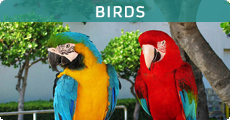Snowy Egret

This animal is a small white heron, which is considered to be the American counterpart to the very similar Old World Little Egret, which has established a foothold in the Bahamas.
Adult birds display a slim black bill and they also have long black legs with yellow feet. The region of the upper bill, near the front part of the eyes is generally yellow but turns red during the breeding season. In breeding season, adults have re curved plume on the back making shaggy plumes.Inland wetlands and coastal wetlands from the lower Great Lakes and southwestern United States to South America are the breeding land for these snowy. Eastern North America extended along the Atlantic and Gulf Coasts from Maine to Texas, and inland along major rivers and lakes form their breeding range. These birds do not stay alone they only nest in colonies, often with other waders, usually on platforms of sticks in trees or shrubs. Sticks, fine twigs and rushes are the constituents of their shallow nests. They build their nests in trees or shrubs. The eggs of these birds are greenish-blue in color, and they are oval in shape, eggs are incubated by both adults. The young birds stay in for about 20-25 days then later they hop off to other branches.
Some of these birds have also migrated to Central America and the West Indies. After their breeding season is over these birds are said to wander in the northern sides. Rarely do they move to the Western Europe, although the first bird for Britain wintered in Scotland from 2001-2.
The snowy Egret finds its prey by either running or shuffling its feet in shallow waters, and thus it flushes its prey into its view. It sometimes gives a surprise attack to its prey by standing still. They also hunt for insects stirred up by domestic animals in open fields. They eat fish, crustaceans, and insects.
Once, these beautiful plumes of the Snowy Egret were in great demand, because they were used for decorating women's hats. Now the government has announced hunting these birds as illegal, and now their population has increased.












